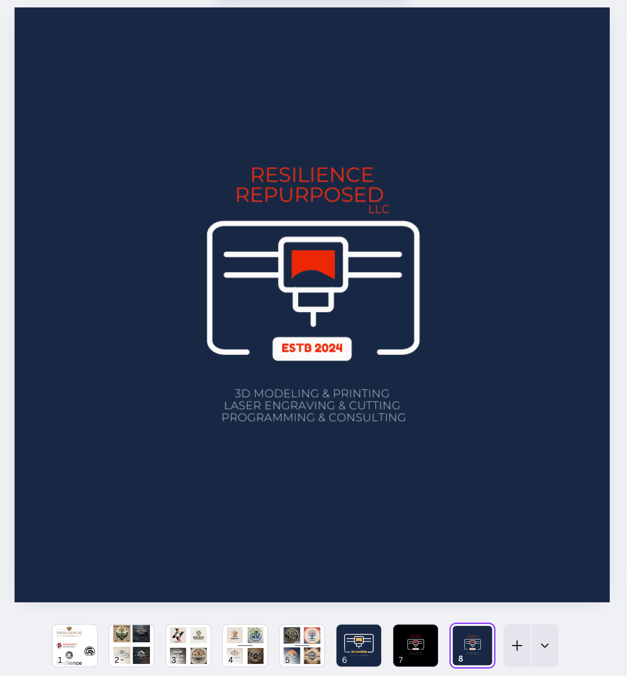The Role of 3D Printing in Modern Manufacturing
Introduction
The rise of additive manufacturing, commonly known as 3D printing, has significantly impacted modern manufacturing by enabling rapid prototyping, cost reduction, and design flexibility. Initially developed for prototyping purposes, 3D printing has evolved into a full-scale production technology utilized across multiple industries, including aerospace, automotive, healthcare, and consumer goods (Wohlers & Campbell, 2022). This article examines the impact of 3D printing on manufacturing, its advantages, challenges, and future potential.
The Evolution of 3D Printing in Manufacturing
3D printing has shifted from a niche tool for research and development to a core production method for various applications. Technological advancements in materials, software, and hardware have contributed to its widespread adoption, allowing manufacturers to create complex, lightweight, and highly customized products with improved efficiency (Gibson, Rosen, & Stucker, 2021).
Advantages of 3D Printing in Manufacturing
Cost Efficiency
Unlike traditional subtractive manufacturing methods, which remove material to form a product, additive manufacturingbuilds objects layer by layer, significantly reducing material waste (Lipson & Kurman, 2013). This approach lowers material costs and enables sustainable production by minimizing excess material consumption.
Enhanced Design Flexibility
One of the most significant benefits of 3D printing is its ability to create highly intricate and customized designs that would be difficult or impossible to achieve using conventional manufacturing techniques (ENTTEC, 2023). This flexibility is particularly advantageous in industries such as medical device manufacturing, where patient-specific implants and prosthetics are required.
Rapid Prototyping and Production
3D printing enables manufacturers to develop prototypes and production-ready components quickly, reducing lead times and accelerating product development cycles (Wohlers & Campbell, 2022). This capability is particularly beneficial for small-batch production and custom fabrication, where traditional manufacturing methods may not be cost-effective.
Sustainability and Supply Chain Optimization
By decentralizing production and reducing reliance on large-scale supply chains, 3D printing helps minimize transportation costs and environmental impact. Additionally, many 3D printing materials are recyclable or biodegradable, contributing to eco-friendly manufacturing practices (Grenda, 2020).
Challenges and Limitations
Despite its advantages, 3D printing faces several challenges that impact its widespread adoption in high-volume production:
• Material Limitations: While advancements have expanded the range of materials available, traditional manufacturing still offers a wider selection of high-strength and heat-resistant materials (Gibson et al., 2021).
• Production Speed: Additive manufacturing remains slower than mass-production methods like injection molding or CNC machining, making it less viable for large-scale production (Lipson & Kurman, 2013).
• Quality Control and Consistency: Variability in layer adhesion, print quality, and structural integrity can affect product performance and require additional post-processing (Wohlers & Campbell, 2022).
• High Equipment and Material Costs: Industrial 3D printers and specialized materials can be expensive, posing a barrier for smaller manufacturers looking to adopt the technology (ENTTEC, 2023).
The Future of 3D Printing in Manufacturing
The future of 3D printing in manufacturing looks promising, with continuous advancements in multi-material printing, AI-driven design optimization, and hybrid manufacturing technologies. Researchers predict that 3D printing will continue to expand into bioprinting, construction, and high-performance aerospace applications, further revolutionizing industrial production (Deloitte, 2023).
Conclusion
3D printing has transformed modern manufacturing by offering unparalleled flexibility, efficiency, and innovation. While challenges such as material limitations and production speed remain, ongoing advancements are expected to enhance its capabilities. As the technology continues to evolve, additive manufacturing will become an increasingly integral component of the manufacturing industry.
About This Blog
This blog is dedicated to exploring cutting-edge innovations in engineering, manufacturing, and design. It provides insights into emerging technologies, industry trends, and best practices to help professionals and businesses stay ahead in a rapidly evolving landscape. Whether you are an engineer, entrepreneur, or industry enthusiast, this blog serves as a resource for understanding the latest advancements and their real-world applications.
About This Writer
Lewis Brent Parker, Jr. is an experienced engineer, entrepreneur, and veteran advocate with a background in manufacturing, innovation, and leadership. With expertise in welding, fabrication, and industrial design, he brings a unique perspective to the intersection of engineering and emerging technologies. Parker’s work spans corporate engineering, nonprofit advocacy, and scholarly research, making him a thought leader in resilient, future-proof manufacturing solutions.
References
• Deloitte. (2023). The Future of Additive Manufacturing: Market Trends and Growth Projections. Deloitte Insights.
• ENTTEC. (2023). Advancing Engineering Through 3D Printing: Applications and Innovations. ENTTEC Manufacturing Reports.
• Gibson, I., Rosen, D. W., & Stucker, B. (2021). Additive Manufacturing Technologies: 3D Printing, Rapid Prototyping, and Direct Digital Manufacturing (2nd ed.). Springer.
• Grenda, E. (2020). 3D Printing Revolution: How It’s Changing Manufacturing Across Industries. 3D Print Hub.
• Lipson, H., & Kurman, M. (2013). Fabricated: The New World of 3D Printing. John Wiley & Sons.
• Wohlers, T., & Campbell, I. (2022). Wohlers Report: Additive Manufacturing and 3D Printing State of the Industry. Wohlers Associates.
Content




